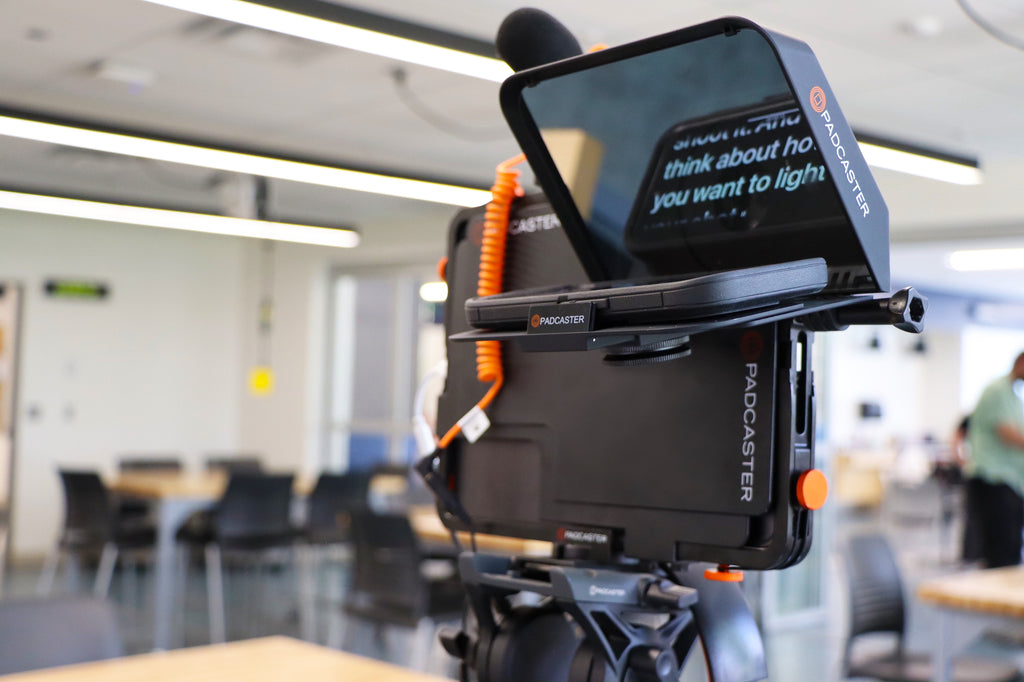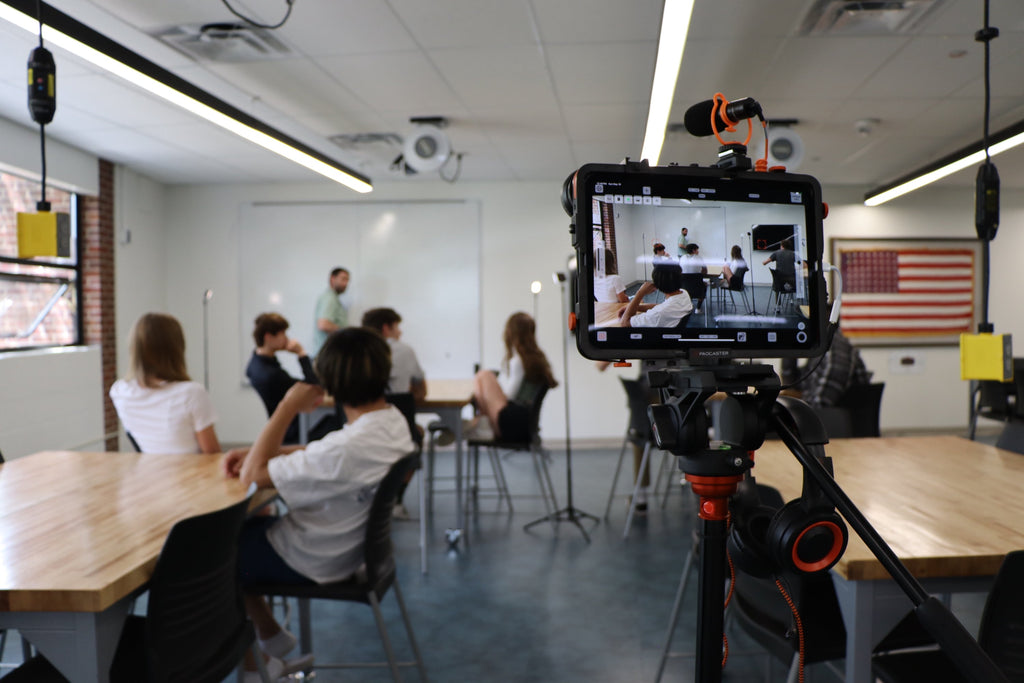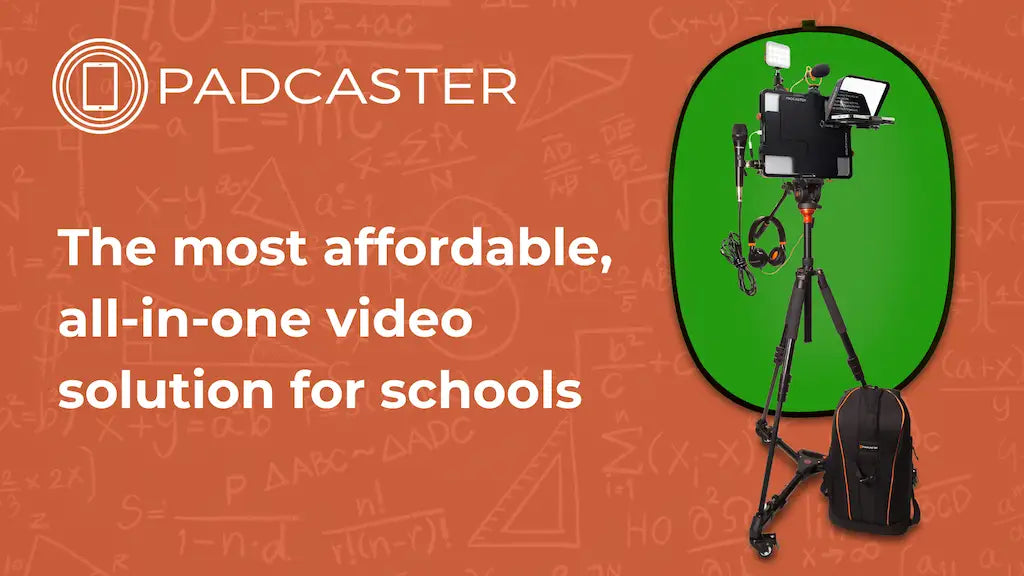
Padcaster recently sat down with Library Media Specialist Kelsey Means to answer the questions, “what does it take to create a 21st-century library media program?” and “how can it prepare students for the workplace?” Ms. Means uses video creation to instill a love of literacy in her students while also exposing them to 21st Century technology. She has pioneered numerous video production projects across multiple grades to encourage creativity, digital citizenship, and information literacy skills. Whether through morning announcements, zoo animal projects, weather reports or publishing videos to share with other classrooms around the World, Ms. Means is dedicated to ensuring her students' success through media production.
Tell us a little background about yourself and what you do as a Library Media Specialist with the Eastern Lancaster County School District.
I can’t remember a time before I knew I wanted to be a librarian! I am so blessed to be able to live my dream everyday! I hold a Bachelors of Library Science in Education from Kutztown University. Prior to my position, I was Assistant Director of the ELANCO Public library in New Holland, PA. I started my career with ELANCO School District, at Brecknock Elementary, in January of 2017. Next school year (2019-2020) I will be moving to our secondary campus and working with students in grades 7-12.
As a library media specialist at the elementary level, I instruct 28 different classes of kindergarten to sixth-grade students weekly. Along with library media instruction, I have the unique opportunity every third week to work with teachers in my building and collaborate by taking library skills and teaching them within classroom curriculum.
In your eyes, what does a 21st-century library media program look like? How do you use media to encourage a love literacy and digital citizenship?
Literacy and a love of reading will forever be the bedrock of library media programs. Today, library media specialists are preparing 21st-century learners for a world that is forever changing. A 21st-century library media program prepares students by teaching digital citizenship, information literacy, and technology skills. Students need to be able to be safe and responsible on the Internet, find authoritative information, spot different kinds of bias, and be confident with technology.
When we discuss the topic of literacy in a 21st-century program, it goes way beyond reading words on a page. Literacy is feeling confident with technology, knowing how to navigate different online databases, and understanding how to access different types of digital content. My goal with my students has always been to make learning fun and to encourage them to become lifelong learners. To facilitate this kind of learning environment I use student choice. Whenever possible I allow students to choose research topics, which digital resources they use, and what type of technology they want to use to showcase their work. Along with choice, I try to teach in a way that gets students engaged in their learning. Recently I have used escape rooms, virtual reality creation, and of course, green screen video creation to get my students excited.
What made you decide to pursue video as a means to facilitate media education?
I want my students to have opportunities to learn how to be independent with all kinds of technology; recording and video editing wasn’t something our Brecknock Elementary students were exposed to. I collaborated with my colleague third-grade teacher Wendy Blankley to write a grant to our educational foundation, the Spartan Foundation, for a Padcaster Studio. The Padcaster Studio is now being used by almost all grade levels in our building through library classes and collaboration with classroom teachers.
What was the first video project you facilitated? How did the students react?
The first project I facilitated was the project Wendy and I wrote in the grant. As part of our 3rd-grade curriculum, students study the weather and create their own weather reports. We wanted our students to be able to record their weather report using the green screen and pretend to be real meteorologists.
In preparation for this project, we skyped with Millersville University Weather Center Director, Eric Horst. Eric really gave students a great overview of what a career in meteorology is like and students were able to ask him questions about his job.
Students practiced reporting the weather daily for a couple of weeks and when it came time to record using the green screen they really knocked it out of the park! Not only did we get the recording in only a couple of takes, but our 3rd graders edited the video themselves; picking the backgrounds and animations using the DoInk application. We completed the whole video in just one class period! Once students started editing their video I could see their excitement grow! I had explained how a green screen worked but once they actually got to see it first hand, they really rolled with the idea and I’m amazed at what they were able to create! Listening to them collaborate and make changes during the editing process was really inspiring.
What was it like teaching kindergarteners video production with the Padcaster Studio? What did you focus on with the younger students?
Teaching kindergarteners video production was a ton of fun! Our kindergarteners complete a zoo animal research project every spring and I have been so fortunate to collaborate with my colleague Bonnie Brier on this project for two years now. Students had already done their research and we just wanted to capture them saying their facts and then put their animals behind them in their videos. Each group decided who was going to say each fact and introduced themselves. Some students were shy around the camera, but they really did a great job while we were recording! Our afternoon kindergarten class really impressed us when each group did their recording in only one take!
With kindergarten students, I focused on the presentation during recording. We had the layout of the video predetermined for them. Students had to memorize their facts, look at the camera, and speak into the microphone. Each student got to pick what picture they wanted to superimpose behind them when they said their fact, and students helped me complete the editing so everyone got input.
With kindergarten students, I focused on the presentation during recording. We had the layout of the video predetermined for them; students had to memorize their facts, look at the camera, and speak into the microphone. Each student got to pick what picture they wanted to superimpose behind them when they said their fact, and students helped me complete the editing so everyone got input.
Why do you think it’s important that students start becoming digital citizens at a young age?
The students I am teaching now will be entering jobs that haven’t even been created yet; we have no idea what the world will look like when our students are entering the workforce. The earlier students learn to be independent digital citizens, the more prepared they will be for the real world. My goal with my elementary students is for them to become confident in the digital world and learn how to be responsible with technology and ethically use information. I have found that the simplest way to build these skills is to start young.
Do you have any projects in mind that you want to implement with the middle school and high school students?
I’m hoping to give my secondary students a chance to just be creative with different types of technology while collaborating with classroom teachers to incorporate technology into what they are already doing. I’ve found at the elementary level it is really simple to take a project that is already in place and add a technology piece. I plan to build a Teen Advisory Board of students in grades 7-12 who can help with book orders, library programming and video (green screen!) tutorials on new technology. We also do not have televised announcements at the middle school level, so I would like to start a club that would utilize the green screen every morning.
What do you think is the biggest roadblock when it comes to teaching video production? How has Padcaster helped you overcome that?
I think one of the big roadblocks when it comes to teaching video production is finding technology that is kid-friendly, especially for elementary students. When I tell students we are going to be recording video they assume I am going to be doing the recording/editing, as if it is too complicated for them to do independently. I love that I can reassure them that they don’t need my help at all! Because the Padcaster essentially turns an iPad into a professional recording device, we can use kid-friendly applications to make green screen recording/editing super simple for our students.
What insight can you give to other teachers about teaching students video production when they’ve never encountered it before?
With any new technology, just let students try it out! I have found that it is so effective to say to students “This technology is new to me too! Let’s figure it out together”. Students will learn very quickly when given time to simply explore. When I got our Padcaster all set up I told my after school club we were just going to take an afternoon and try it out! Some of the best moments in my job are when my students teach me how to do something new! Never be afraid to try something new with your students, and when it comes to video production, you will be surprised what they come up with!
Do you have any advice for other media educators interested in incorporating video production into their curriculum?
Have fun with it and share what you and your students are creating! Collaboration is the key to really getting green screen projects off the ground! Start with one teacher and see how quickly others will want to use the green screen too. In these last couple weeks of school, I have seen a HUGE demand for the Padcaster Studio; to the extent that I just had to make a schedule for the equipment so everyone could get a turn!
Need More Information?
Fill out the form here to get in touch with a member of the Padcaster Team.


